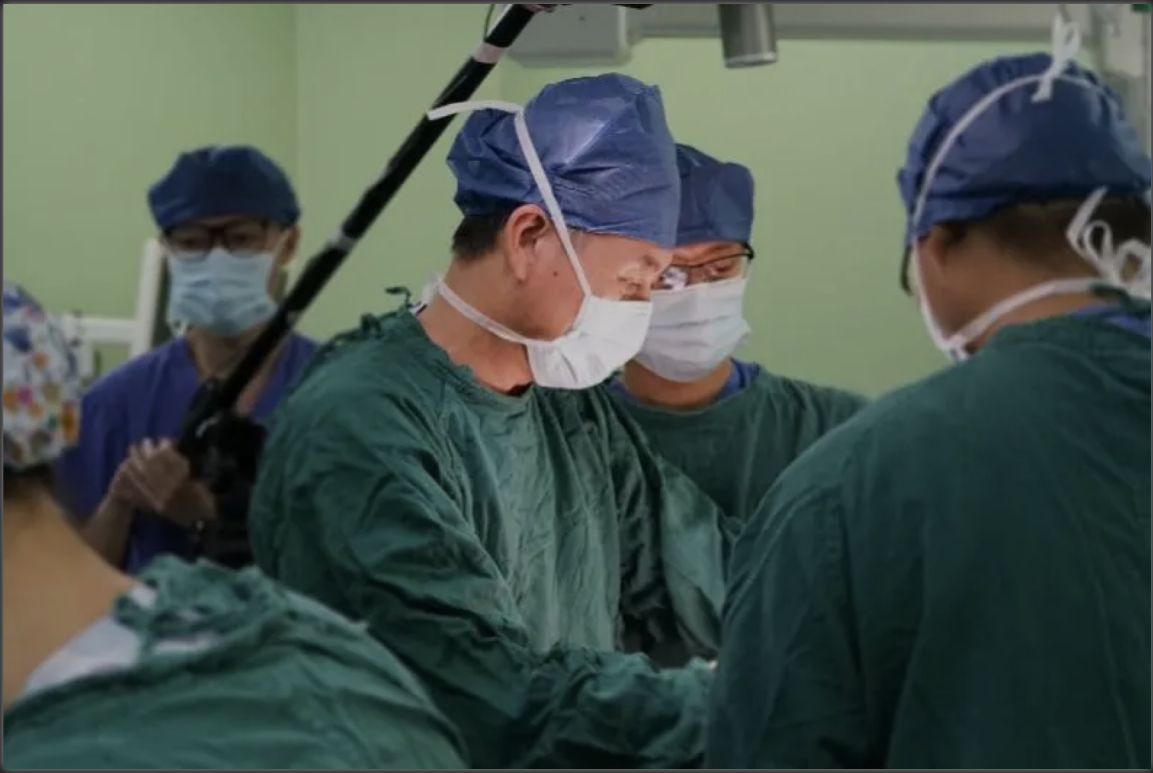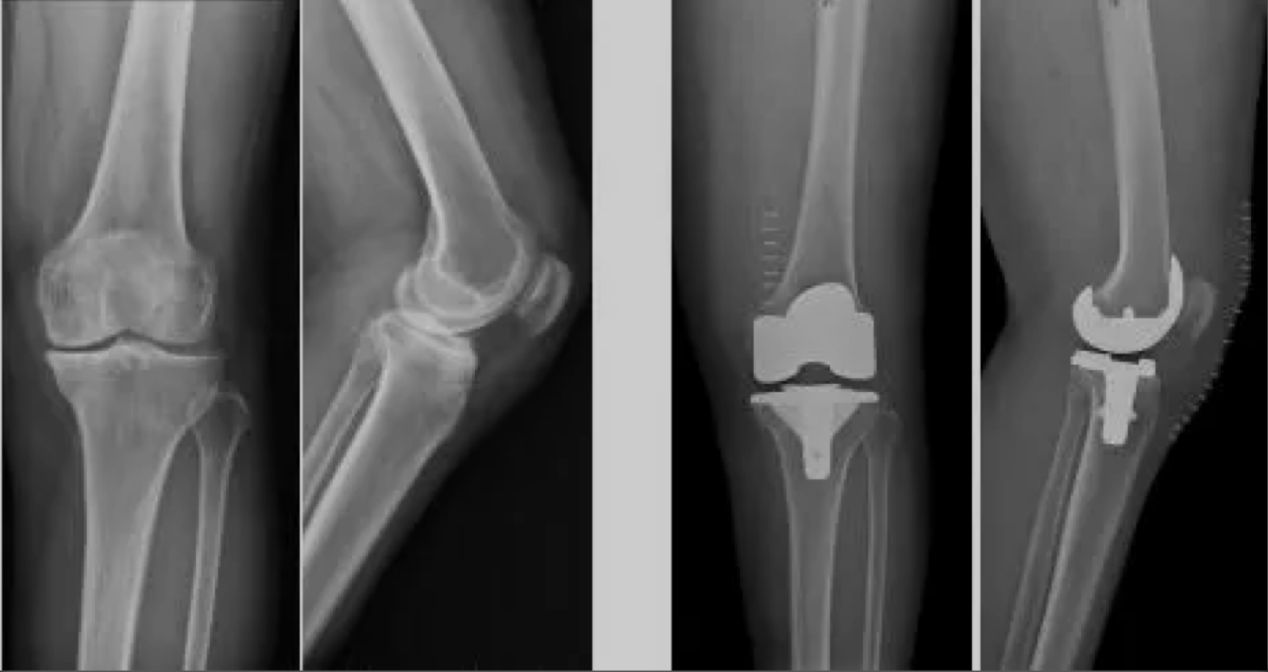The First Case in the World: West China Hospital Successfully Implanted Biological Knee Joint Prosthesis with 3D-printed Partitioned Bone Trabecular

Open the phone and scan

On September 30, a team led by Professor Zhou Zongke from the Department of Orthopedics of West China Hospital, Sichuan University successfully implanted a biological knee joint prosthesis with 3D-printed partitioned bone trabecular for Granny Wu who suffered from knee osteoarthritis. This new type of prosthesis can enable close contact between the prosthesis and bone interface, promote bone tissue to grow into the prosthesis, improve the bonding strength of the prosthesis and the medullary cavity, so as to achieve the long-term stability of the prosthesis and save the patient's bone mass while avoiding toxic side effects caused by bone cement.
After literature search, this implantation operation seems to be the first of its kind in the world.
The patient, Granny Wu, aged 68, has been suffering from knee pain for many years. In the past two years, her symptoms have significantly worsened. Not only did her knee pain become unbearable when she went up the stairs or squatted down, she could not stand and walk after sitting for too long, and she cloud only hobble less than 300 meters on flat roads, which seriously affected her quality of life.
Granny Wu went to many hospitals, was diagnosed with knee osteoarthritis, and received a number of treatments, including analgesics, physical therapy, and intra-articular injections. However, none of the results were satisfactory.
In this September, West China Hospital officially took the lead in launching a clinical research project for total knee replacement with a biological knee joint prosthesis. Compared with traditional total knee replacement with bone cement prosthesis, the technology used in this project can achieve better curative effects while reducing the economic burden of patients. Participants of in this project also include Peking University Third Hospital, Qilu Hospital of Shandong University, The Third Hospital of Hebei Medical University, Tianjin Hospital and many other well-known domestic Grade-A tertiary hospitals.
After hearing the news, Granny Wu immediately went to West China Hospital to sign up for the clinical research. Professor Zhou Zongke made a comprehensive assessment of Wu's situation:
Limp gait, severe knee pain, restricted movement with flexion and varus deformity;
X-ray film showed that the joint space was narrow with “bone grinding bone”, and osteophytes were formed around the knee joint.
Granny Wu’s osteoarthritis in both knees was at the end stage, and her left knee was even worse. If continuing with a conservative treatment, the knee joint pain would seriously affect her daily activities and quality of life, and the emergence of other systemic diseases would be only a matter of time. The only way to solving her pain was surgical treatment.
Professor Zhou Zongke’s team explained the necessity of surgery, related risks and precautions, as well as the advantages and characteristics of biological knee joint prostheses to Granny Wu. After careful consideration, she agreed to the surgery and signed an informed consent form.

On the afternoon of September 30, Professor Zhou Zongke’s team successfully performed a left knee joint replacement for Granny Wu. Since the implanted biological knee joint prosthesis was fixed without bone cement, the operation time was significantly shortened while avoiding occurrence of bone cement-related complications.


Before the surgery VS After the surgery
The postoperative X-ray film showed that the prosthesis was perfectly matched with the bone, fixed well in the proper the position. The deformity of Wu's left knee was completely corrected, and the knee joint mobility was good. The knee problem that has troubled Granny Wu for years is finally solved.
The knee osteoarthritis suffered by Granny Wu is a degenerative disease of knee joint, which has a high incidence in middle-aged and elderly people. With the economic development and increasingly apparent aging trend, the demand for knee replacement surgery is growing. On the other hand, patients have higher expectations for the quality of life and the service life of prosthesis after knee replacement, which puts forward new requirements for the design and development of knee prostheses.

The world's first biological knee joint prosthesis with 3D-printed partitioned bone trabecular used in this implantation for Granny Wu came into being under this new situation of high demand and high expectations.
At present, most of the knee joint prostheses used in clinical practice are bone cement-fixed prostheses. Bone cement is a bone cementing medium, which can fix the knee joint prosthesis on the bone interface.
Bone cement-fixed prosthesis | Biological knee prosthesis |
Bone cement monomer has certain toxicity; | No need to use bone cement; |
Osteolysis problem with the bone-implant contact; | Realize the transformation from mechanical fixation to biological interlocking fixation, and finally obtain good fixation through osseointegration; |
Deformation and degeneration will occur over time, and the bearing capacity will decrease. | Expect to get a longer service life of prosthesis; |
/ | Shorten operation time, which is conducive to the rapid functional recovery of patients after surgery. |
The successful application of the world's first biological knee joint prosthesis with 3D-printed partitioned bone trabecular means Chinese hospitals and companies choose to develop safer and more effective products suitable for Chinese patients based on their needs. With the in-depth industry-university-research integration, joint prostheses have gradually formed a new trend of transforming from “made in China” to “intelligent manufacturing in China”. The application of the biological knee prosthesis is of important clinical value and industry innovation significance.


